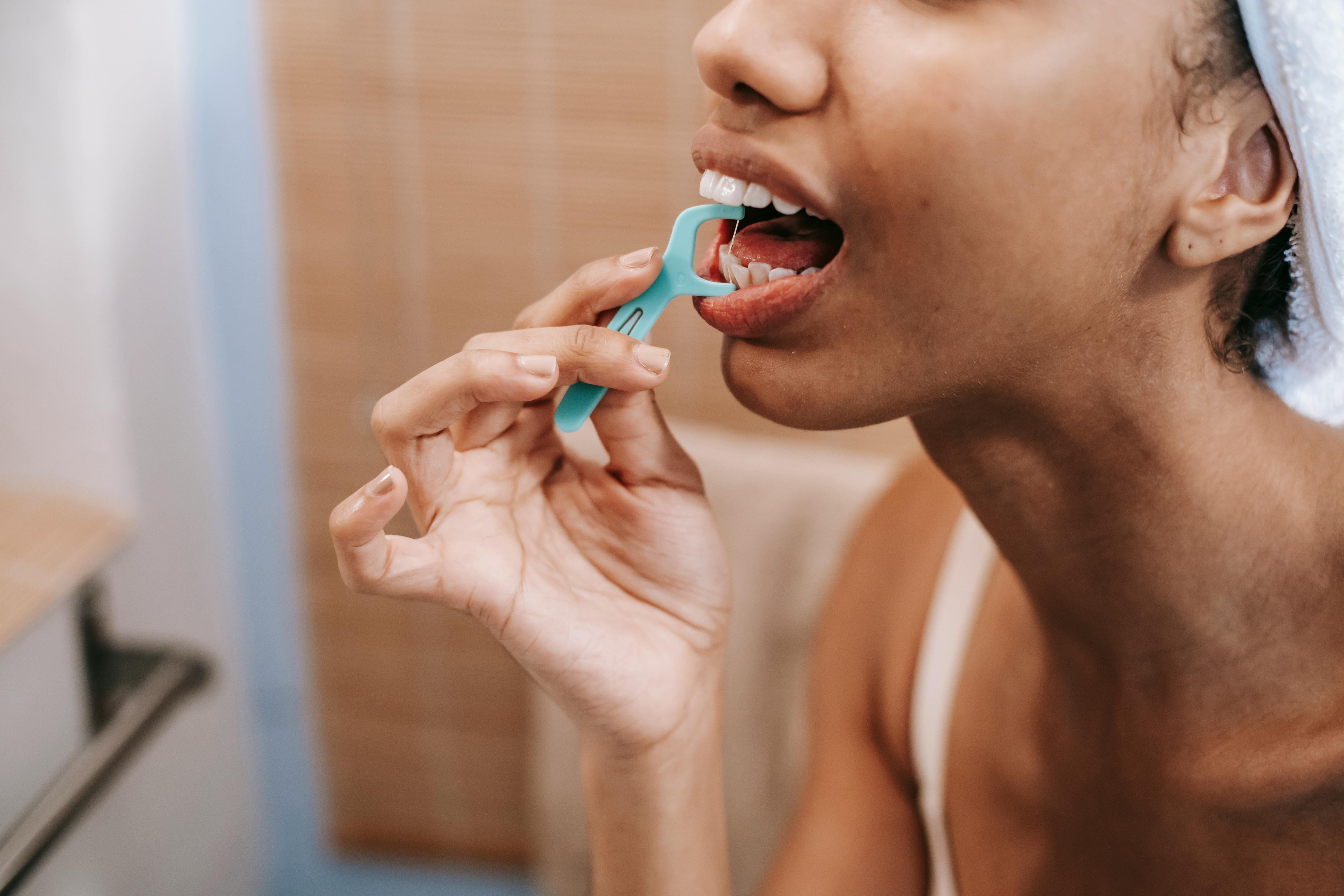Flossing your child’s teeth is an important part of their oral health routine. The American Academy of Pediatric Dentistry (AAPD) recommends that children start flossing as soon as two teeth that touch each other appear. This usually happens around the age of two or three. It is important to start flossing early in order to prevent cavities and other dental problems, and to help establish good oral hygiene habits for life.Baby teeth flossing should start as soon as two teeth are touching each other. This usually happens when a baby is around two to three years old. It is important for parents to help their children floss their teeth twice a day, just like they do for their own teeth, in order to prevent cavities and other oral health problems.
Benefits of Flossing Baby Teeth
Flossing baby teeth is an important part of helping to maintain your child’s oral health. It is recommended that flossing should begin as soon as two of your child’s teeth have grown in close enough together for food particles and other debris to become trapped in between. Flossing helps remove the plaque that accumulates on the surface of the teeth, which can lead to cavities and decay. It also removes food particles that may become lodged between the teeth, preventing bacteria from breeding and causing decay. Flossing also helps keep gums healthy by removing bacteria from the area where the tooth meets the gum line.
Flossing baby teeth can help prevent cavities and decay from forming, which can be painful and expensive to treat later on. It is important to teach your child how to properly floss their teeth when they are young so they can develop good habits for a lifetime of healthy smiles. Demonstrating proper technique and helping your child with flossing until they are comfortable with it will ensure that they are doing it correctly.
Flossing baby teeth is also beneficial in helping them develop good oral hygiene habits early on in life. Regular brushing and flossing will help keep their mouth clean and free from disease-causing bacteria. It is also important for parents to take their children for regular dental checkups so any potential issues can be addressed before they become serious problems.
In summary, flossing baby teeth is a vital part of maintaining their oral health and should begin at an early age. Teaching your child how to properly floss their teeth will help ensure that they develop good habits for a lifetime of healthy smiles. Regular checkups with a dentist are also important for keeping track of their oral health developments as they grow older.
Signs That a Baby Needs to Start Flossing
Babies should begin flossing as soon as their teeth start to touch each other. This usually happens around age two or three. If your baby has not yet started to floss, it is important to look out for signs that they need to start. These signs can include bad breath, discoloration of the teeth, and visible plaque or tartar buildup on the teeth.
Bad breath is one of the earliest sign that your baby might need to start flossing. Bad breath can be an indicator of bacterial buildup in the mouth that is not being removed with brushing alone. If you notice your baby has persistent bad breath, it may be a sign that they need to start flossing to remove any food particles stuck between their teeth and gums.
Discoloration of the teeth can also be a sign that your baby needs to start flossing. If you notice any yellow or brown spots on the teeth, this could be an indication of plaque buildup that should be removed with regular flossing. It is important to note that discoloration can also be caused by certain foods and drinks, so if you notice discoloration it is important to check with your pediatric dentist for an accurate diagnosis.
Lastly, visible plaque or tartar buildup on the teeth can also indicate a need for flossing. Tartar is a hard substance that forms when plaque accumulates on the teeth over time and cannot be removed by brushing alone. Tartar should be removed by a professional dentist cleaning but regular flossing can help prevent it from forming in the first place. If you notice any visible buildup on your child’s teeth, it may be time for them to start flossing regularly.

Supervising Your Child While Flossing
Flossing is an important part of any oral hygiene routine. It helps to keep teeth and gums healthy by removing bacteria, plaque, and food particles from between the teeth. Supervising your child while flossing is a great way to encourage proper technique and ensure that they are doing it correctly. Here are some tips on how to supervise your child while they floss:
First, make sure that you have the right supplies for your child. A toothbrush, floss, and a mirror are all essential for proper flossing. You can also purchase special flossers designed specifically for children to make it easier for them to learn how to use the tools properly.
Second, show your child how to hold the floss correctly and demonstrate the technique of gently sliding the floss between each tooth without applying too much pressure or hurting their gums. Allow them to practice with you watching so that you can provide feedback and modify their technique if necessary.
Third, encourage your child to use a gentle sawing motion as they move the floss from one side of the tooth to the other. Make sure that they don’t apply too much pressure or force as this can cause discomfort or even damage their gums.
Finally, remind your child that it is important to use a new piece of floss for each tooth so that bacteria doesn’t spread across teeth or mouth surfaces. Show them how to dispose of used pieces of floss safely in a trash can or other designated disposal area.
By following these steps, you will be able to supervise your child while they are learning how to properly floss their teeth. This will help ensure that they develop good oral hygiene habits that will last them throughout their life!
Making Flossing Easier for Your Child
Flossing is an important part of regular oral hygiene and should be taught to your child from a young age. However, getting your child to floss can be difficult. Here are some tips for making the process easier:
Encourage Them: Make sure your child knows that flossing is important. Let them know that it’s a necessary part of keeping their teeth and gums healthy, and that it will help prevent cavities and gum disease.
Make It Fun: Flossing can be boring for kids, so make it more fun by letting them use flavored floss or giving them stickers or other rewards after they floss. You can also turn flossing into a game by having them find “hidden” pieces of food in their teeth after they floss.
Set Up a Routine: Establish a regular routine for your child when it comes to brushing and flossing. This will help make it easier for them to stay on top of their oral hygiene habits as they get older.
Demonstrate Proper Technique: Show your child how to properly floss so they understand the importance of using the right technique. If you are not sure how to do this yourself, ask your dentist or hygienist for advice.
Provide the Right Tools: Use dental tools designed specifically for kids when possible, such as children’s toothpastes, brushes, and flossers. If you have older children, electric toothbrush sets with timers are a great way to encourage proper brushing and flossing habits.
By following these tips, you can help make sure that your child develops good oral hygiene habits from an early age and continues them through adulthood.
Using Too Much Pressure
When flossing a baby’s teeth, it is important to remember not to apply too much pressure. It is easy to get overzealous when flossing and unintentionally press too hard, which can cause discomfort for the baby. Be gentle and take your time when flossing to make sure you do not press too hard.
Flossing Too Often
Flossing once a day is typically recommended for adults, but this does not necessarily translate to babies. Babies may only need a few teeth in order to benefit from flossing, so it is important not to overdo it. Talk to your pediatric dentist about the best schedule for your baby’s teeth.
Using Inappropriate Flossers
When shopping for a dental flosser for your baby, it is important to make sure that you purchase one that is specifically designed for babies and young children. These products are designed with smaller hands in mind and typically have wider handles that are easier for even the littlest hands to grasp. Avoid using adult-sized flossers on babies as they may be uncomfortable or difficult for them to use.
Not Using Enough Floss
When flossing a baby’s teeth, it is important that you use enough floss so that you can reach all the way between each tooth without having any gaps where food particles or other debris could get stuck. If you are using traditional dental floss, be sure to use a new piece of floss each time as reusing old pieces of dental floss can lead to bacteria buildup and increase the risk of infection.

Conclusion
Flossing baby teeth is an important part of oral health and should start as soon as the first tooth appears. Kids should be flossing their teeth daily from the age of two to ensure that their teeth and gums remain healthy. Parents can help their children get into the habit of flossing by making it fun and rewarding. Teaching kids about proper oral hygiene is important for preventing tooth decay, cavities, gum disease, and other oral health issues.
Flossing baby teeth may take some time to get used to, but it’s a necessary part of good oral hygiene. With some patience and practice, your child will soon be flossing with ease. It’s important to make sure that your child is brushing twice a day for two minutes each time and flossing once a day to keep their mouth free from plaque and bacteria. With regular care, both you and your child can work towards a lifetime of healthy smiles!
